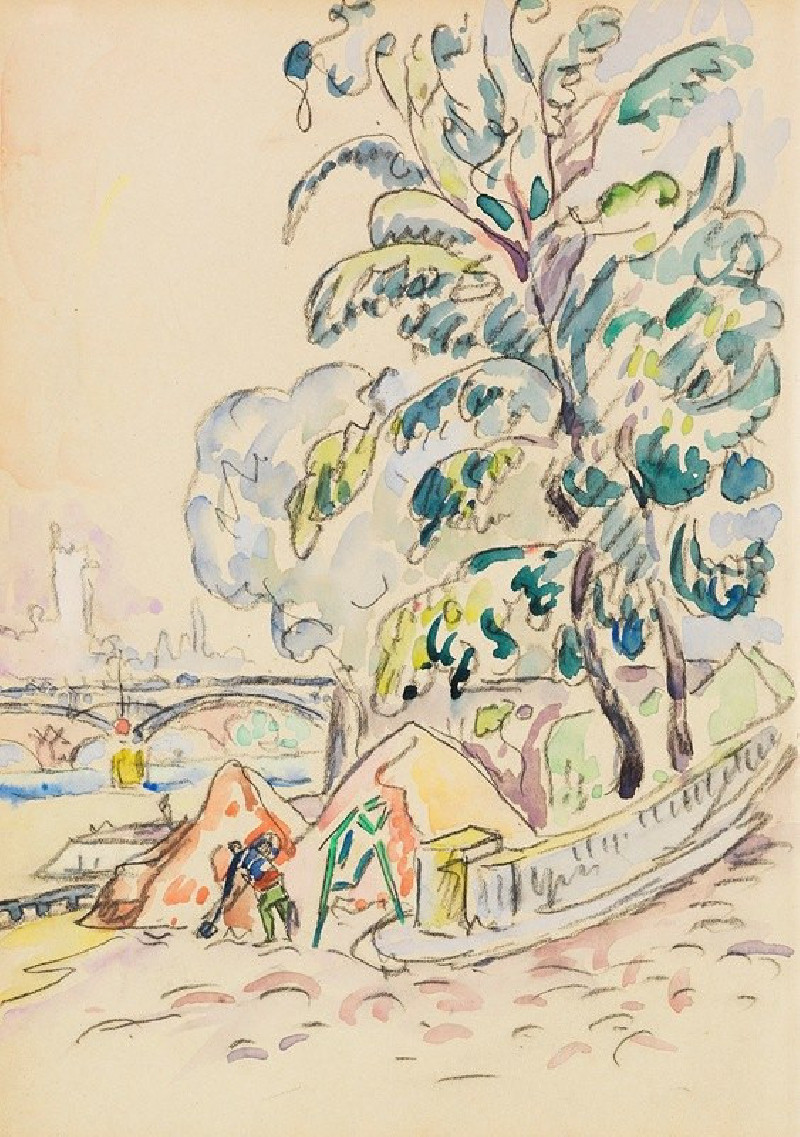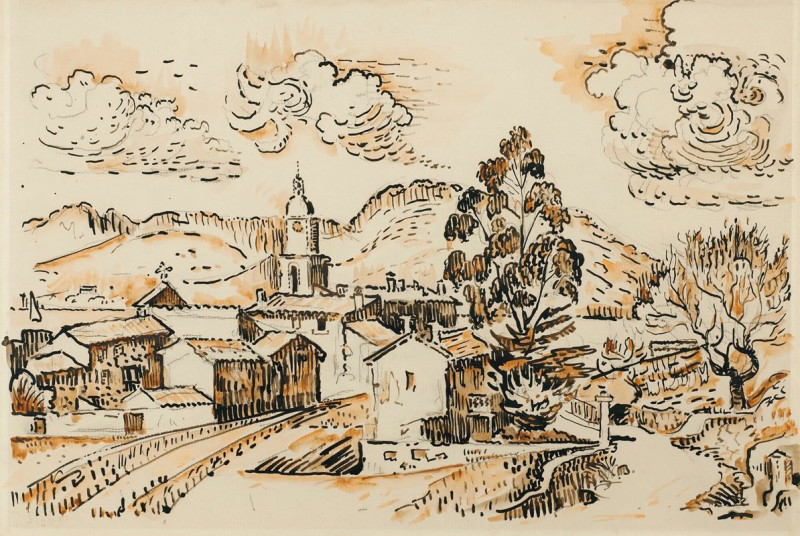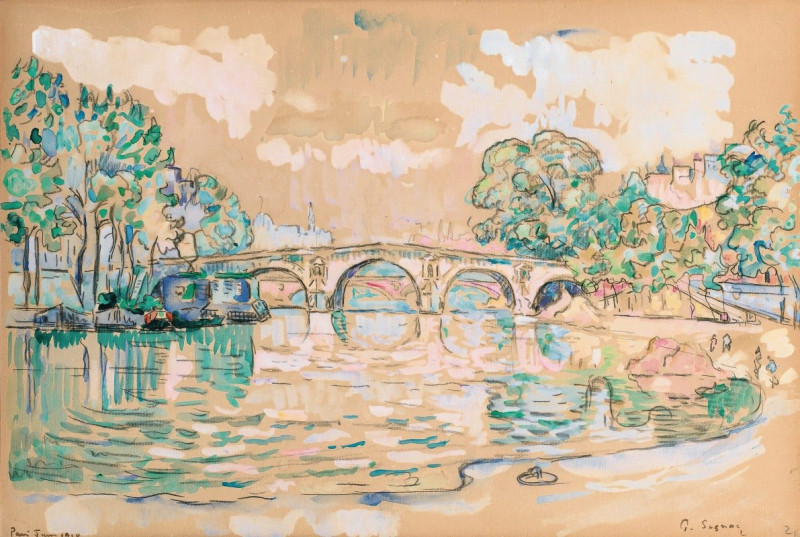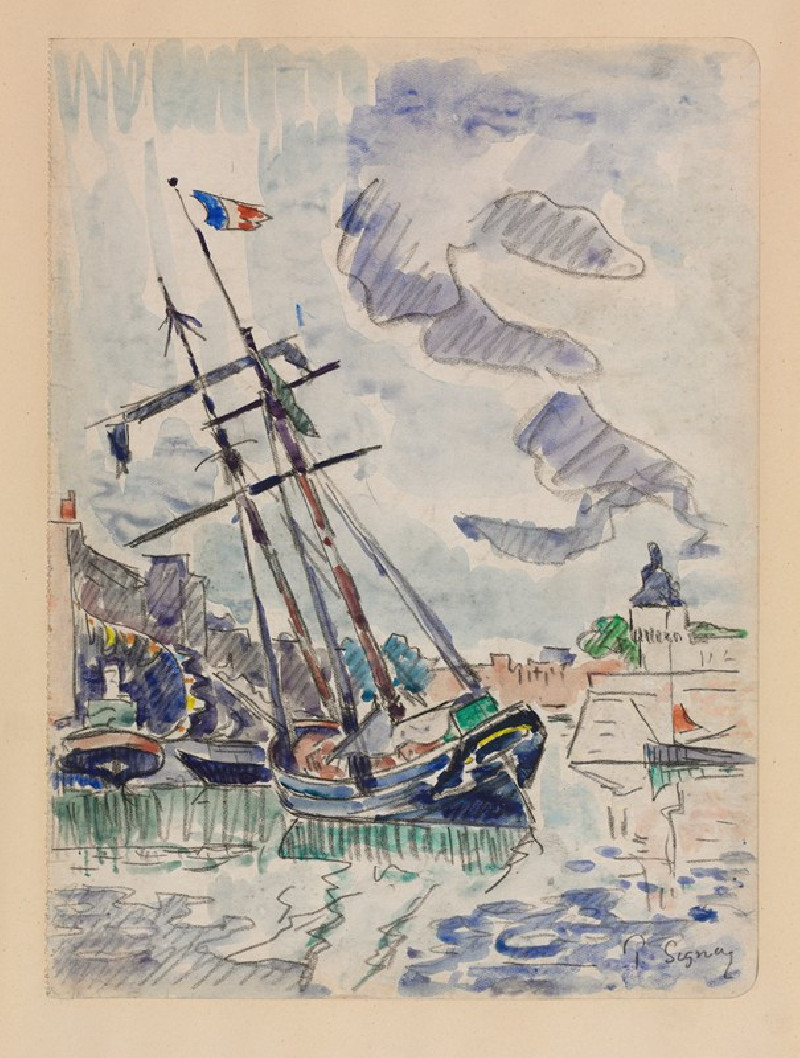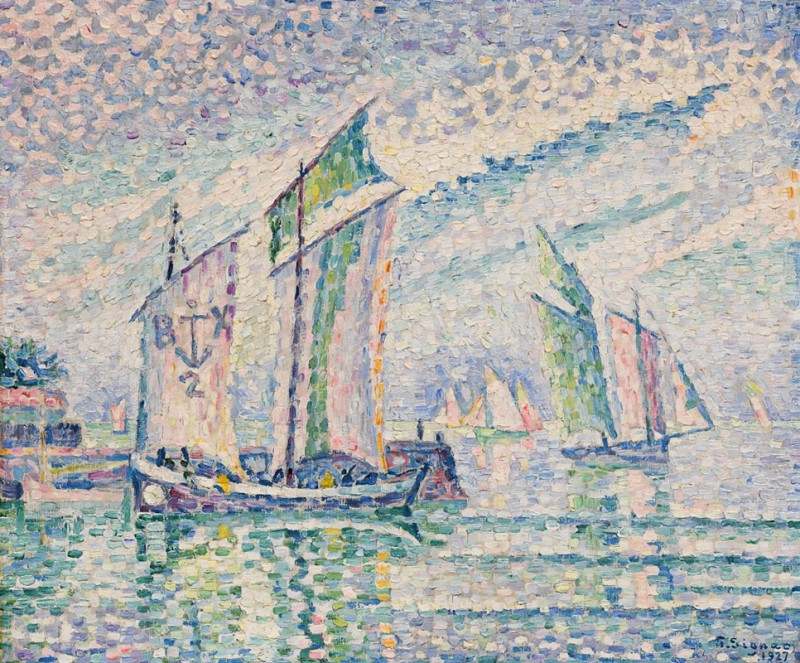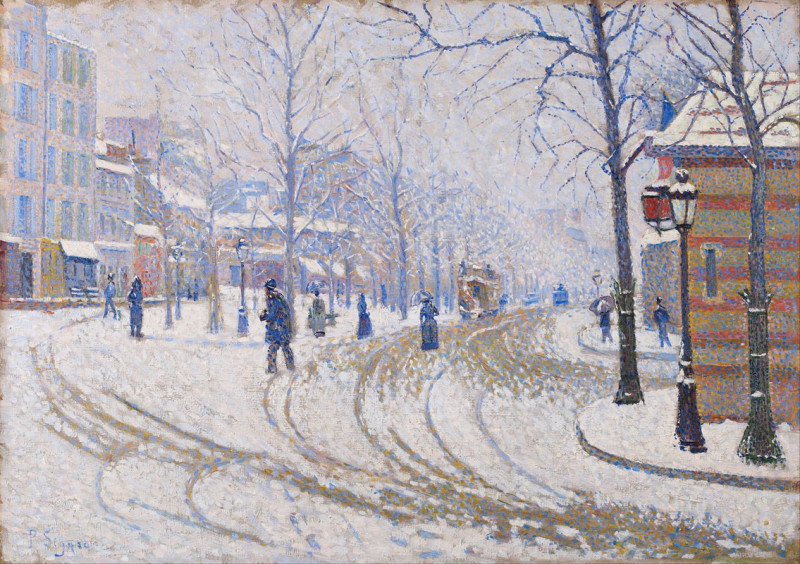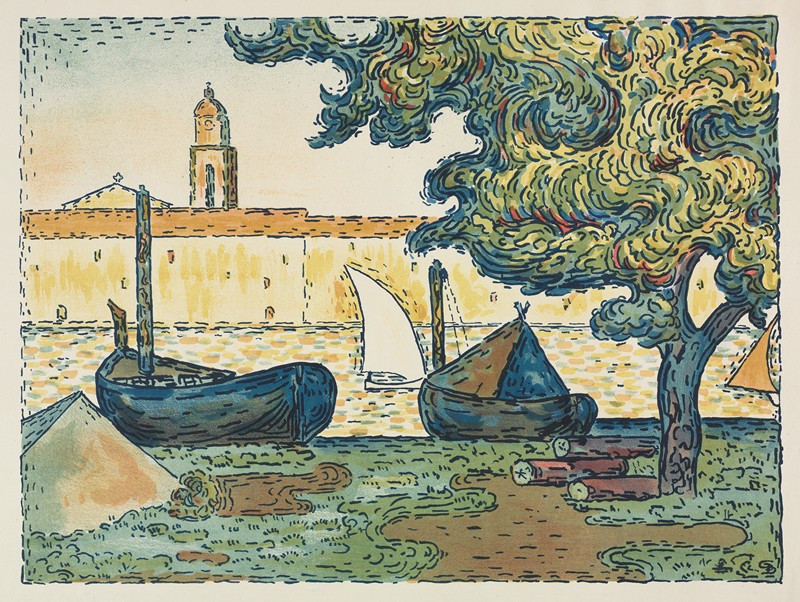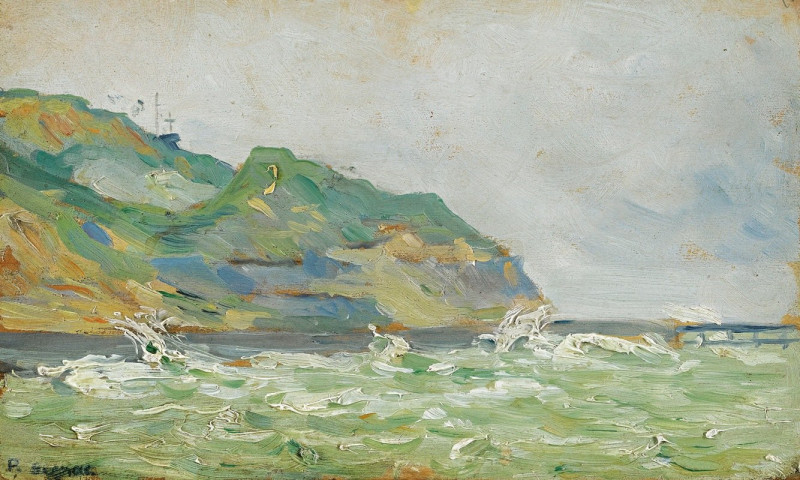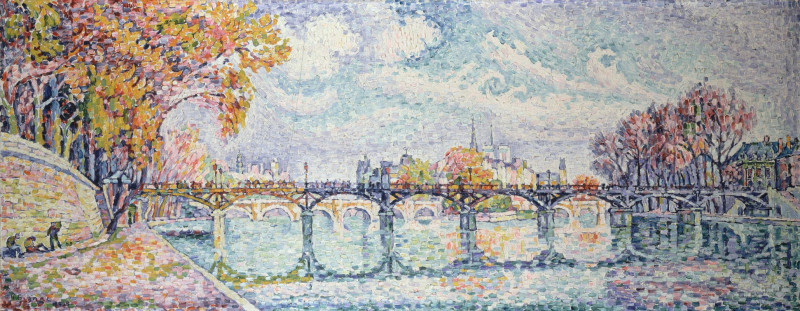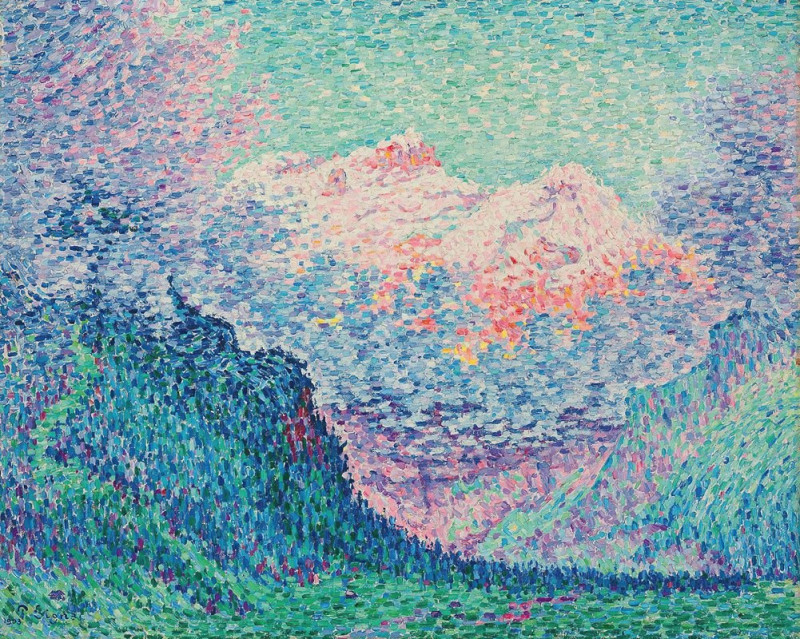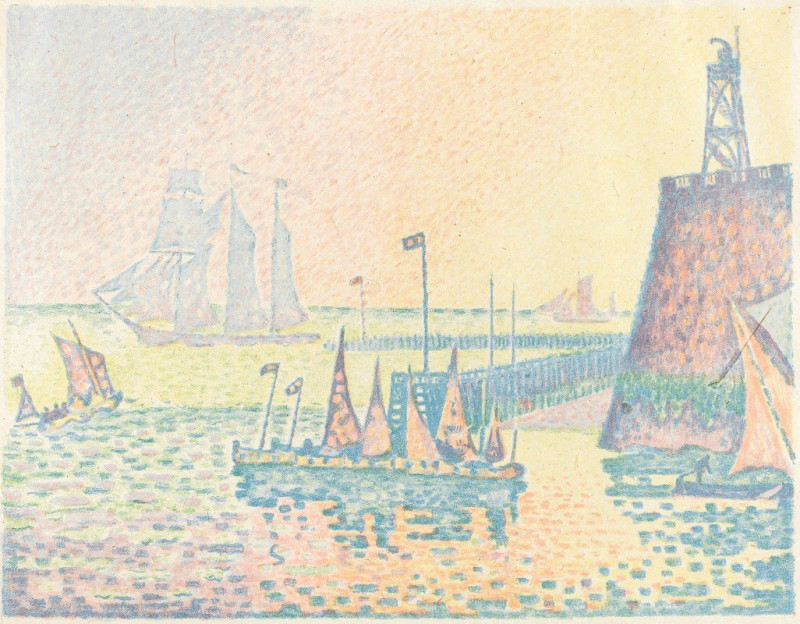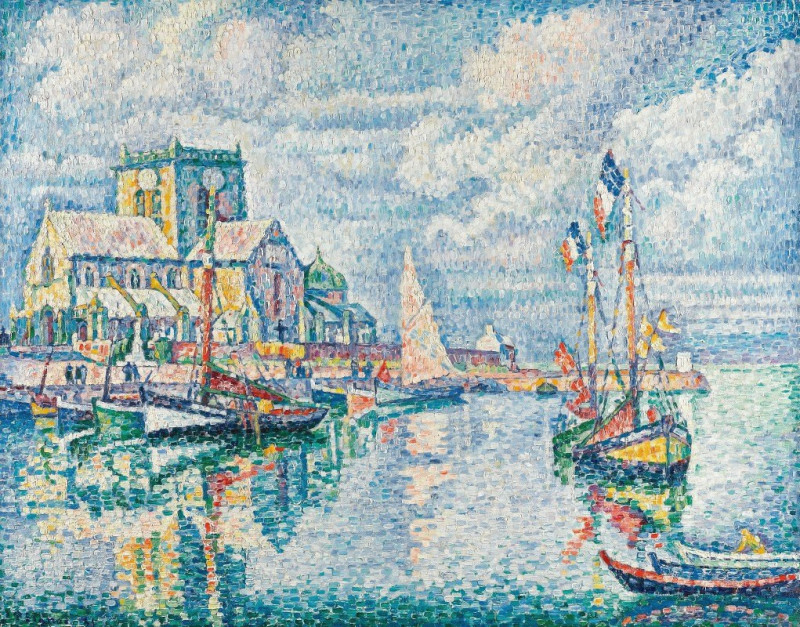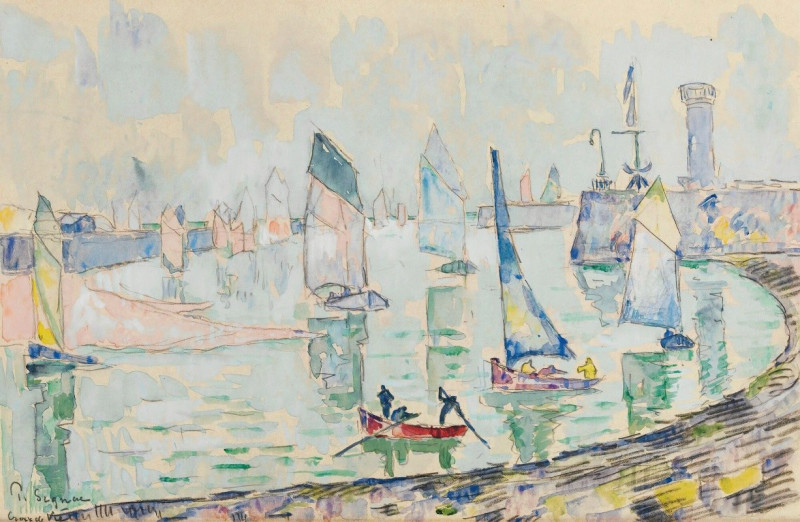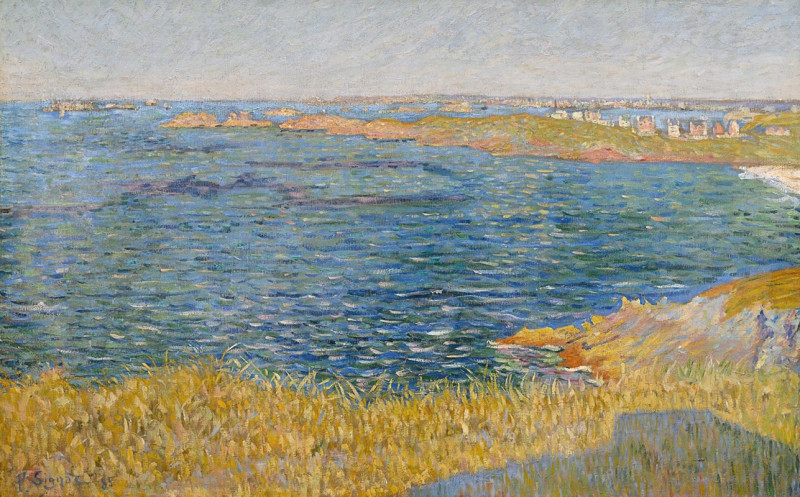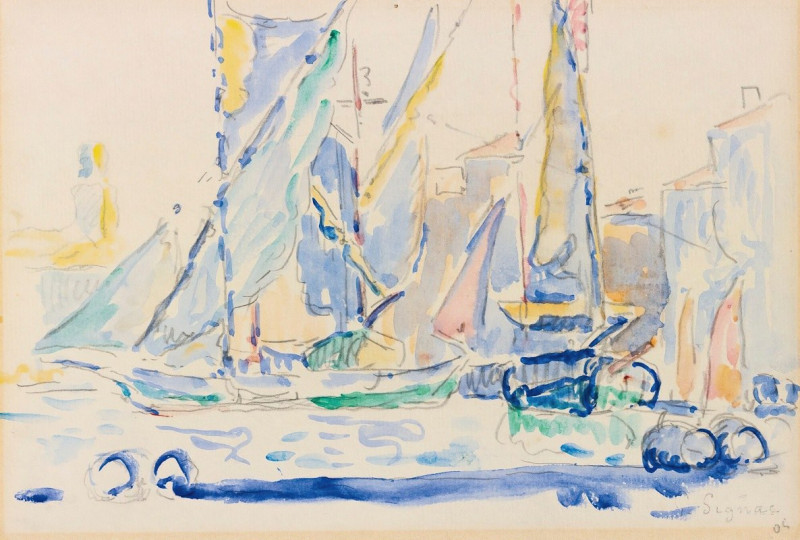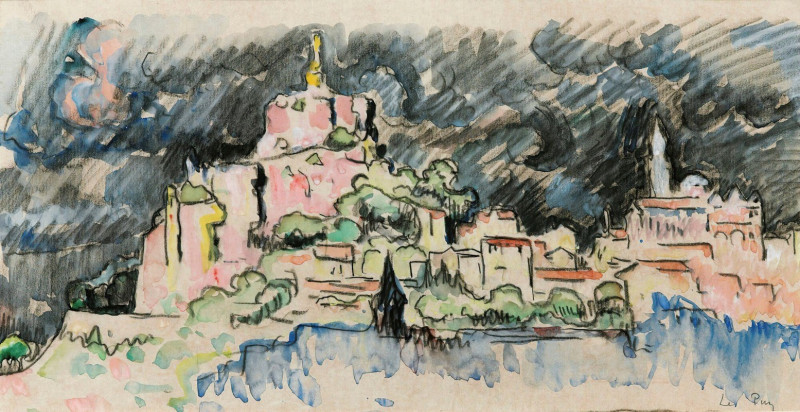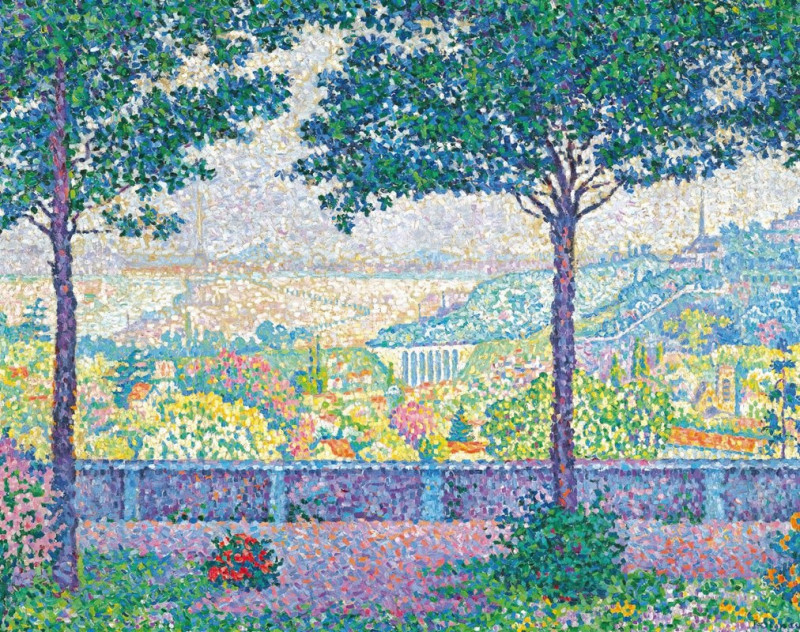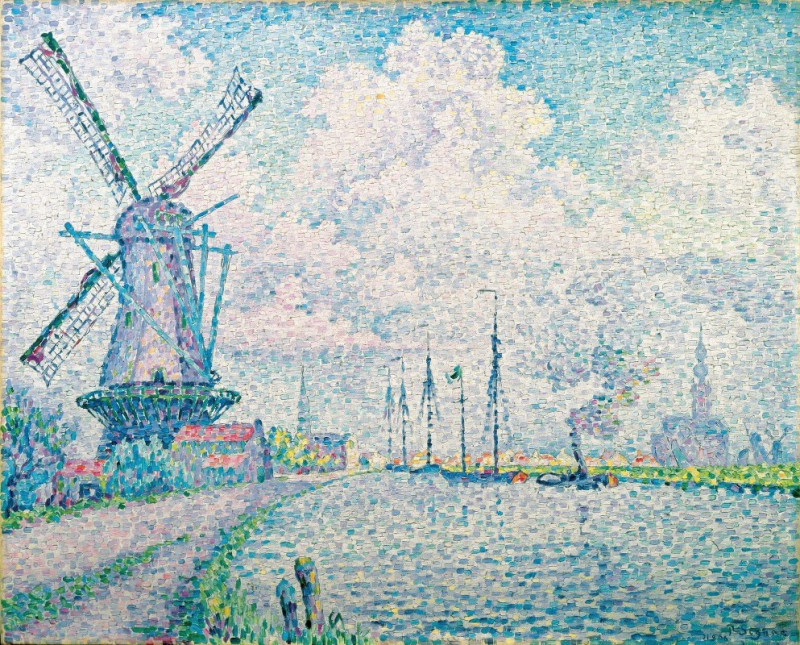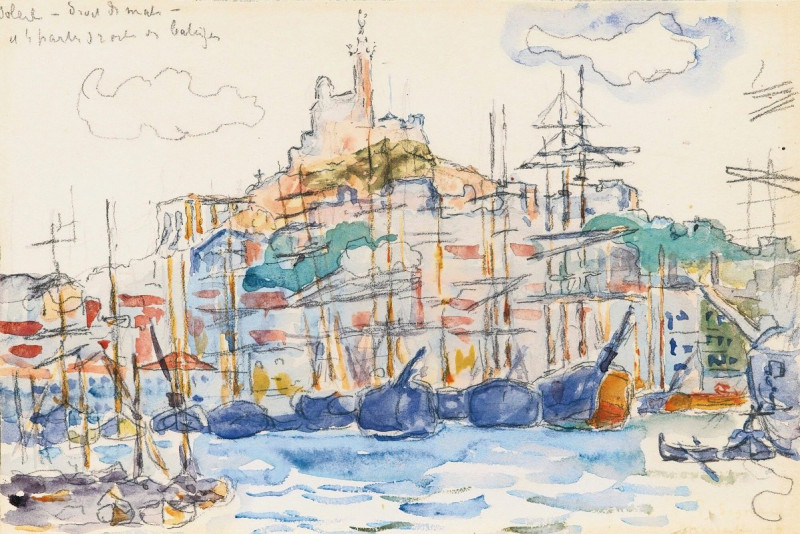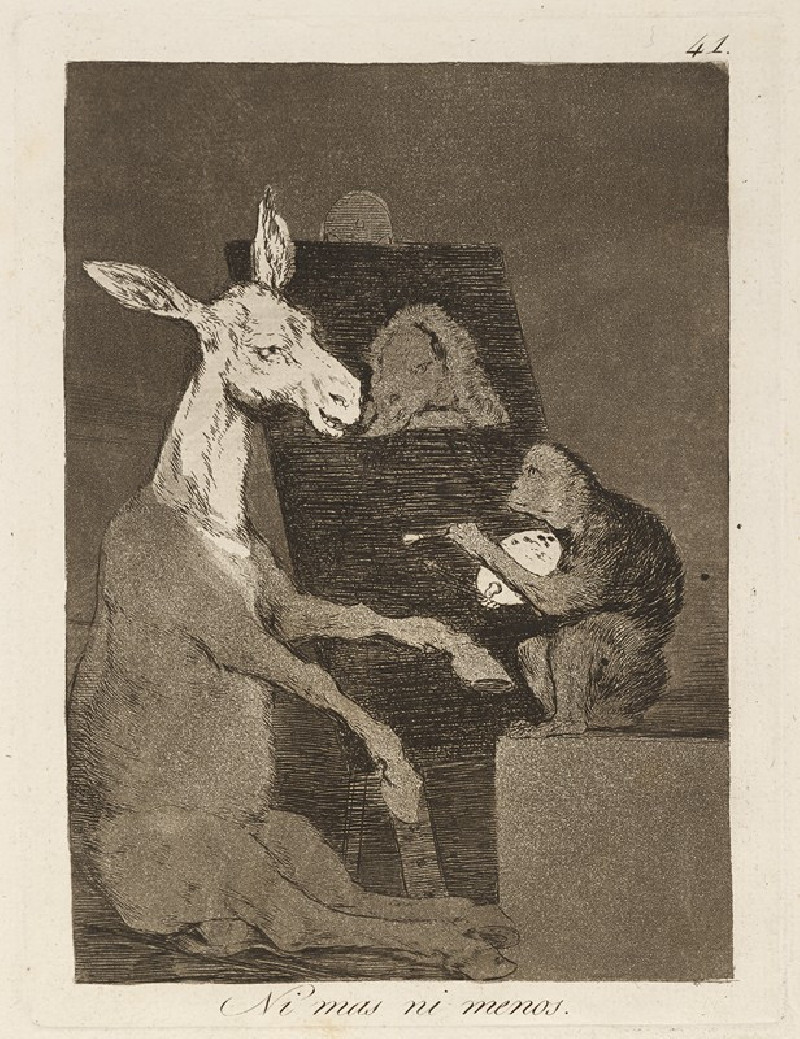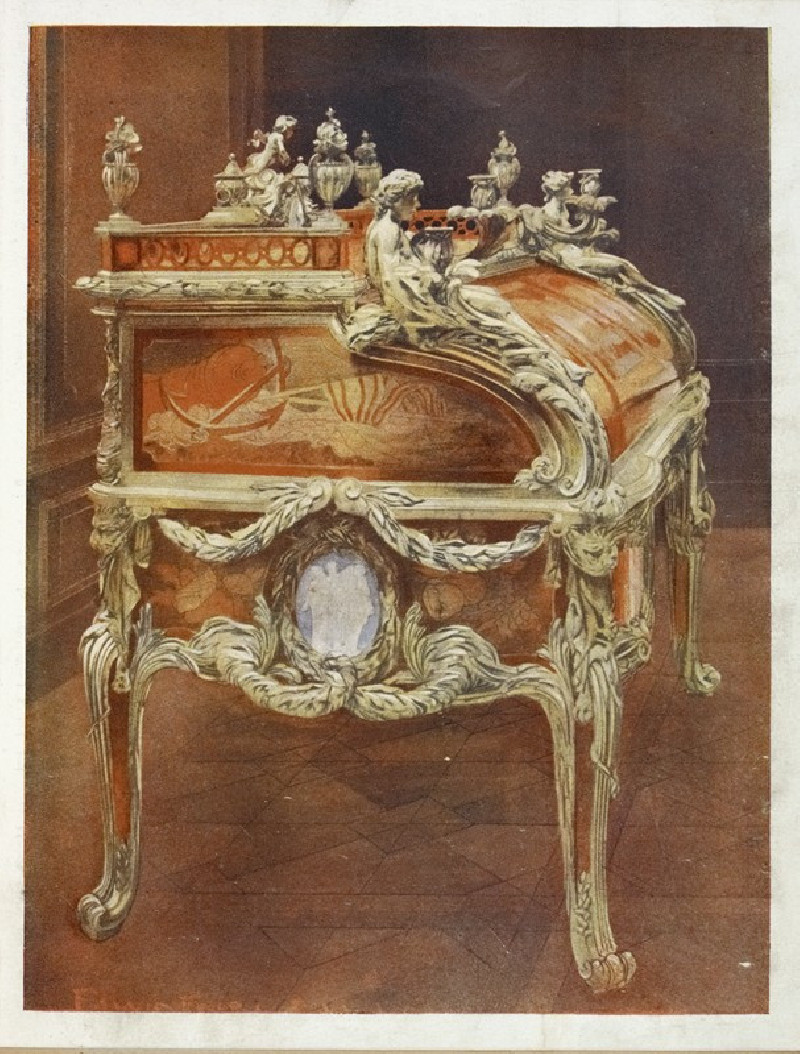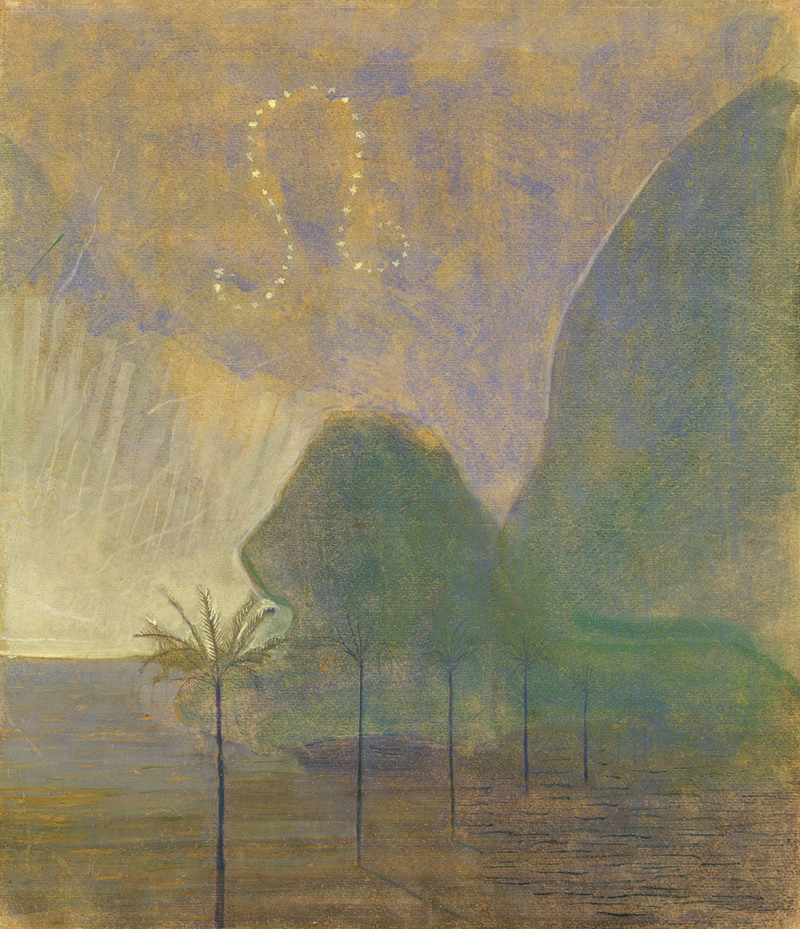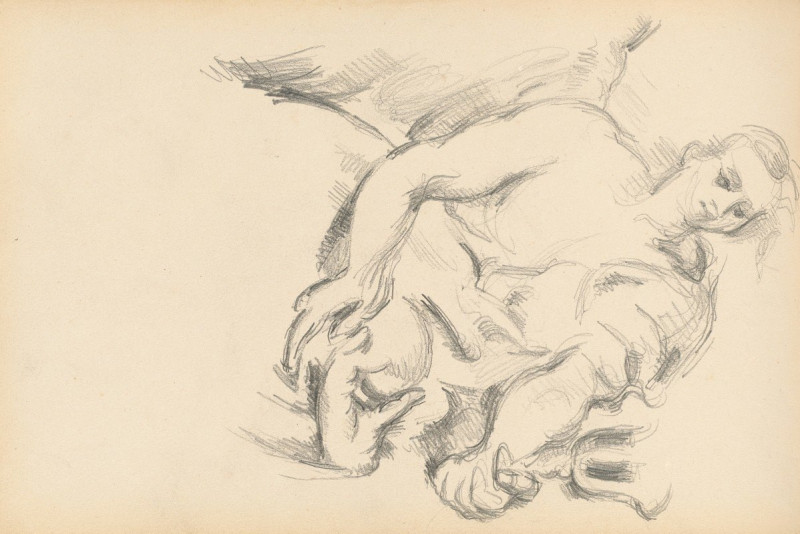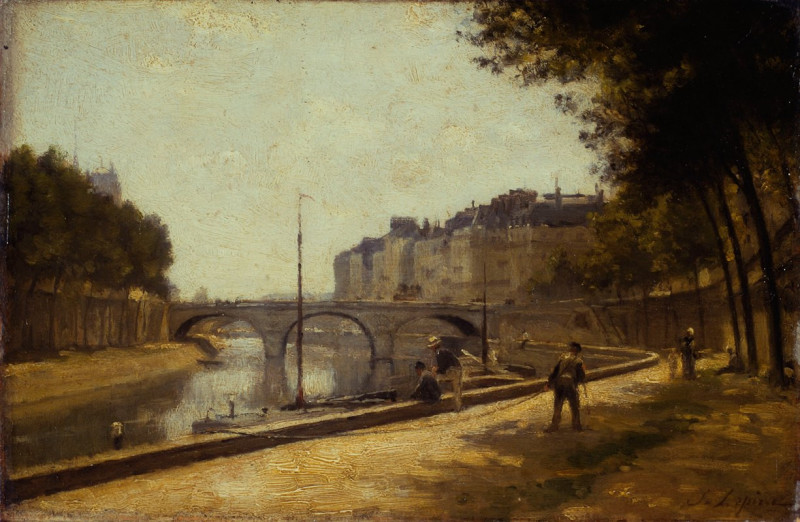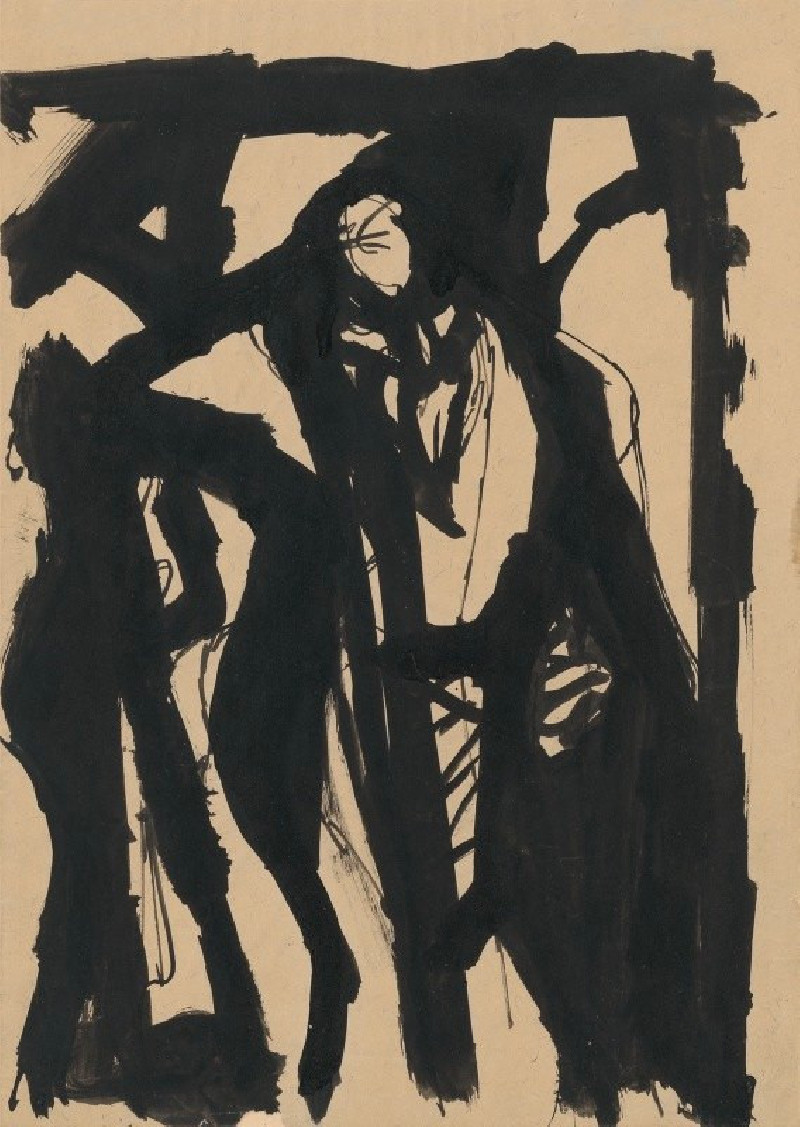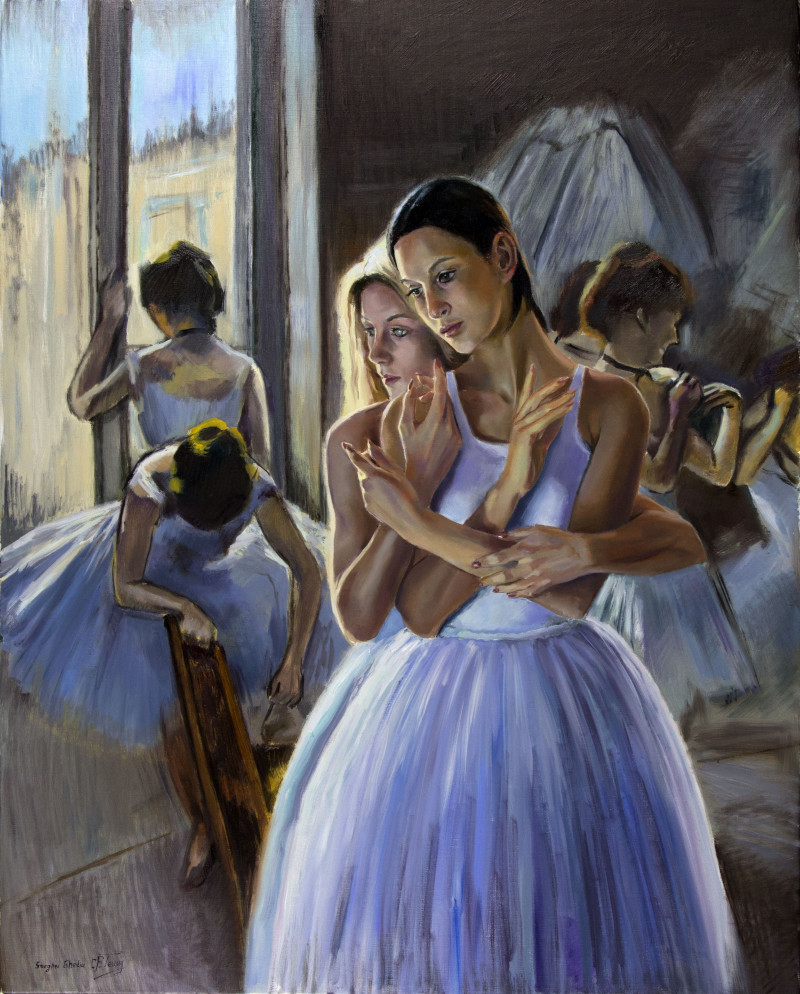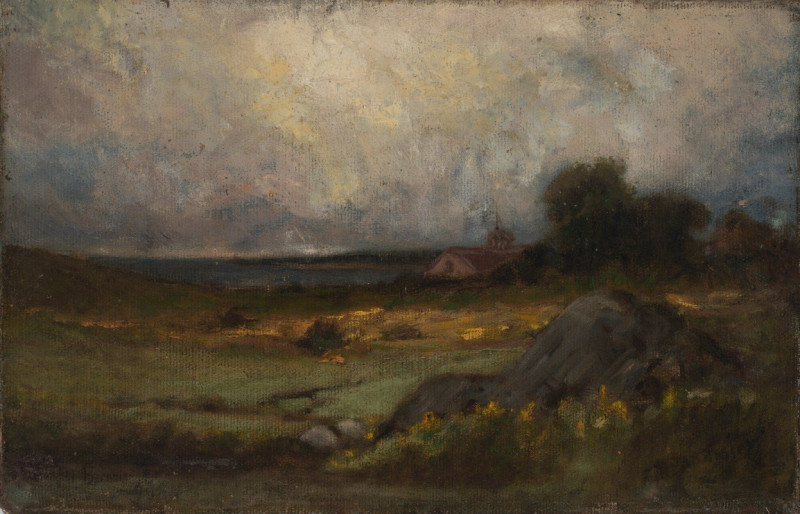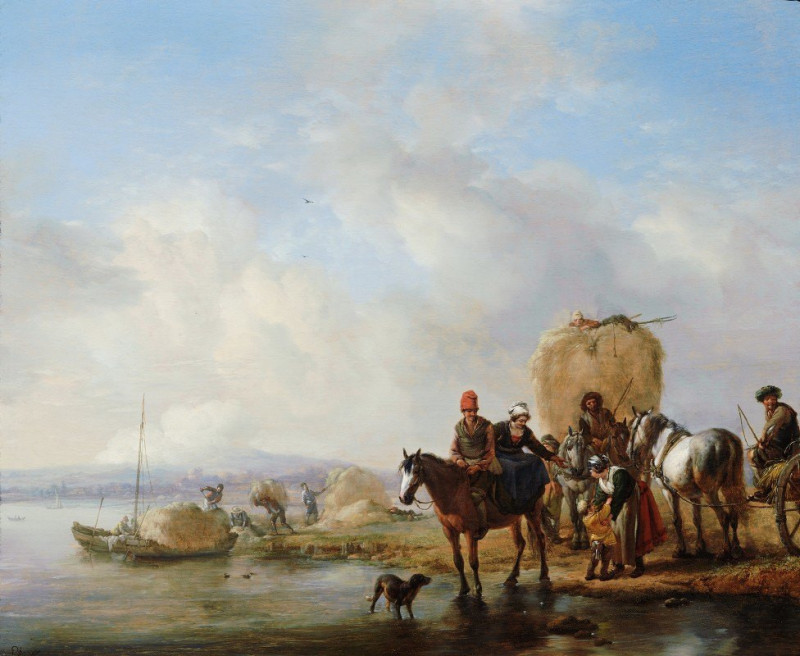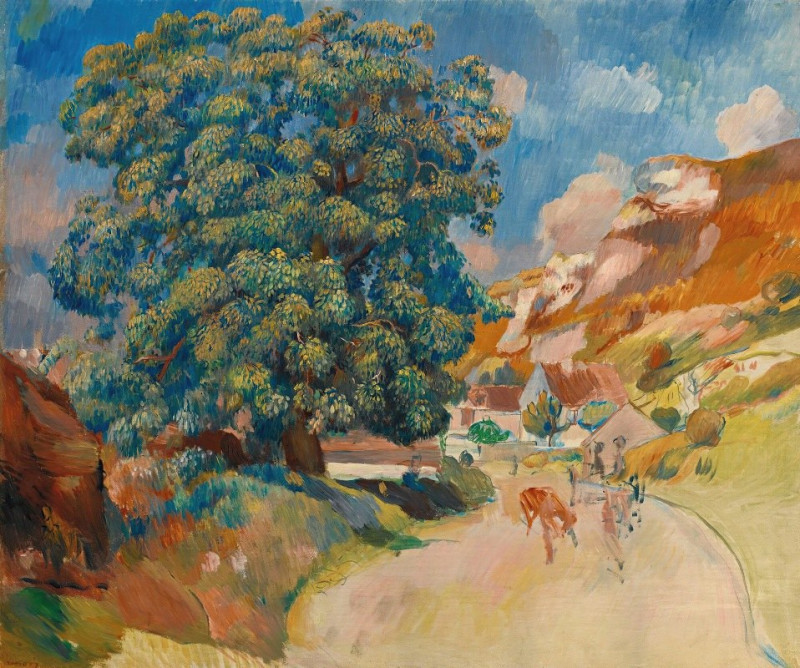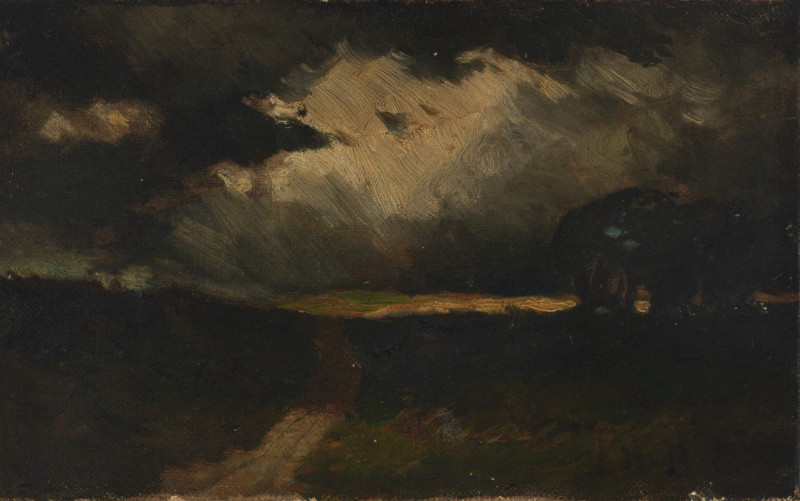An der Pariser Seine (1927)
Technique: Giclée quality print
Recommended by our customers
More about this artwork
"An der Pariser Seine" (1927) by Paul Signac is a vibrant and lively portrayal of life along the Seine River in Paris. In this evocative watercolor painting, Signac captures an intimate and dynamic riverside scene with his characteristic flair for color and light.At the center of the artwork, a flourishing tree with lush, multihued leaves stands prominently, its branches delicately arching towards the sky, imbuing the scene with a sense of growth and vitality. Underneath the tree, a small, colorful tent and a figure give a human presence, infusing the scene with daily life and activity.The background presents a picturesque view of the distant Parisian landscape. The subtle outlines of city buildings and the delicate sketches of bridges across the river blend seamlessly into the horizon, hinting at the bustling city life beyond the serene riverside. The use of soft blues, greens, and hints of orange throughout the painting creates a harmonious and cheerful atmosphere, capturing the essence of a serene day by the river in Paris.
Delivery
Returns
Paul Signac (1863-1935) was a French Neo-Impressionist painter. Together with Georges Seurat, Signac developed the Pointillism style. He was a passionate sailor, bringing back watercolor sketches of ports and nature from his travels, then turning them into large studio canvases with mosaic-like squares of color. He abandoned the short brushstrokes and intuitive dabs of color of the impressionists for a more exact scientific approach to applying dots with the intention to combine and blend not on the canvas, but in the viewer's eye.

